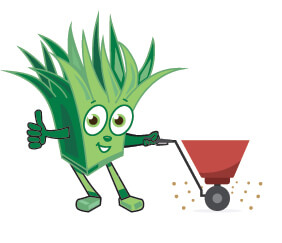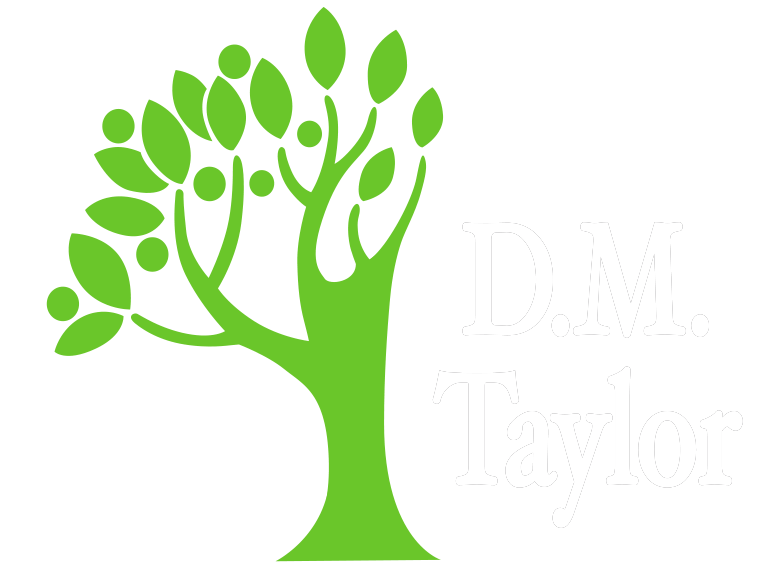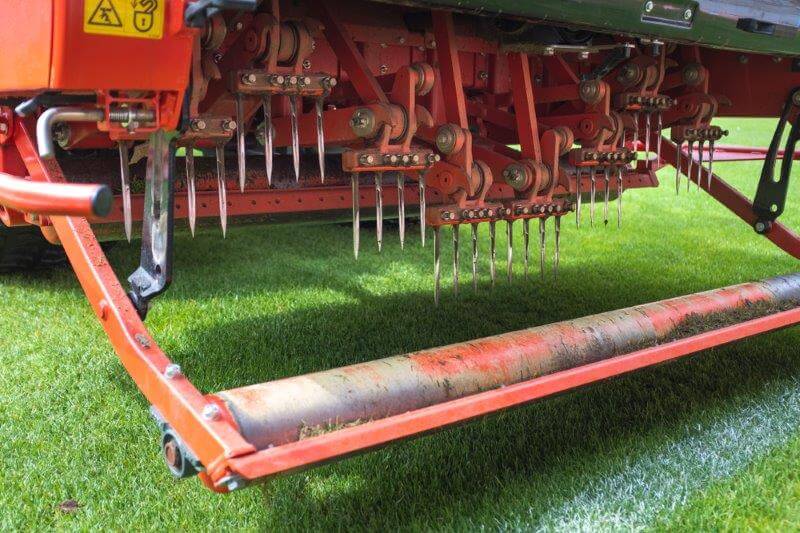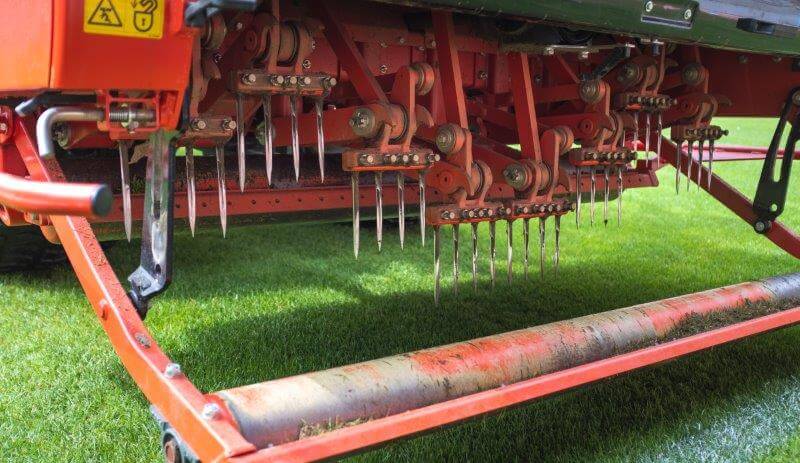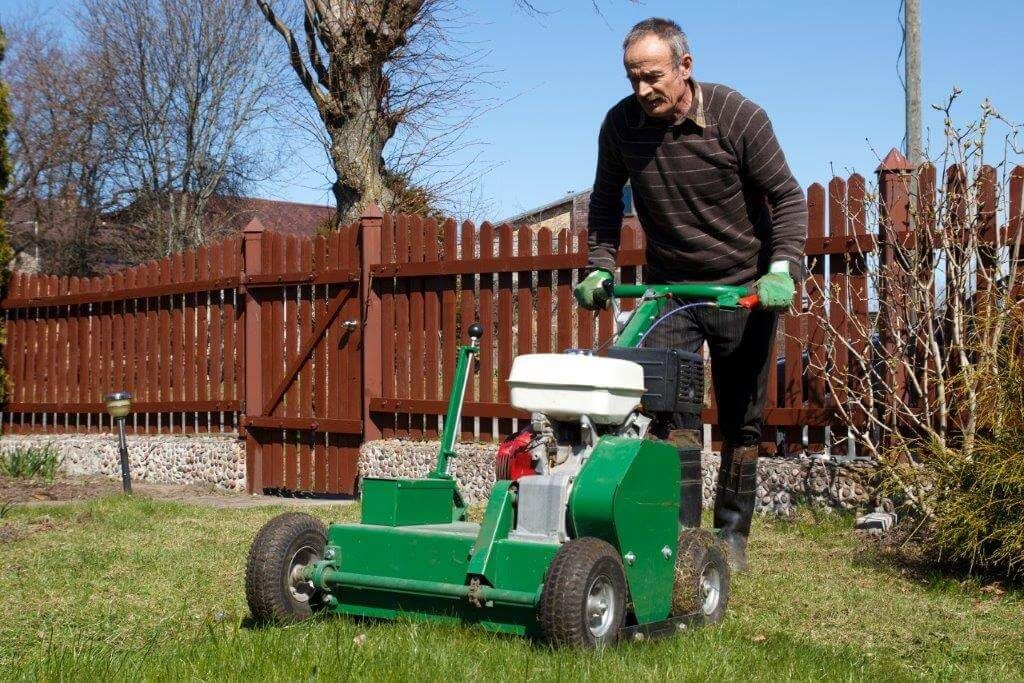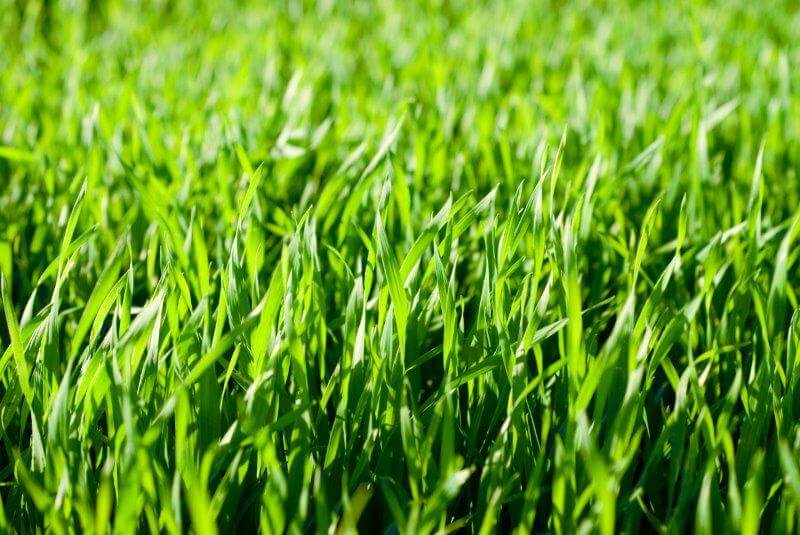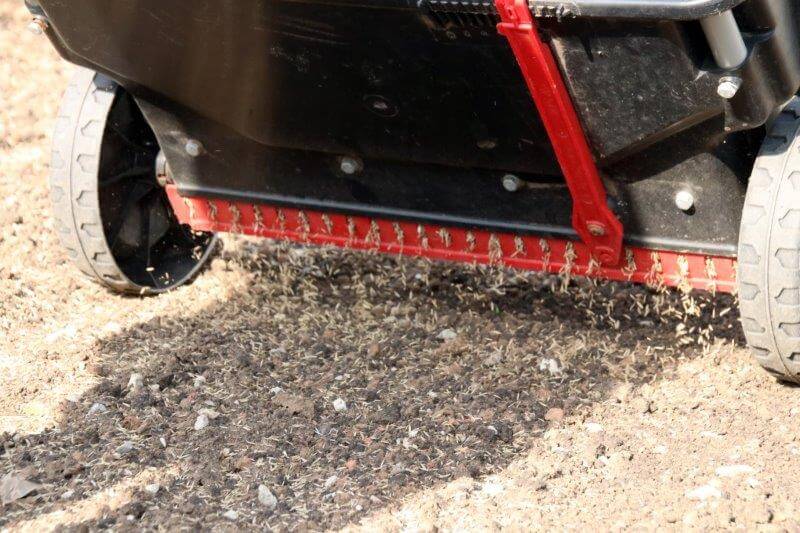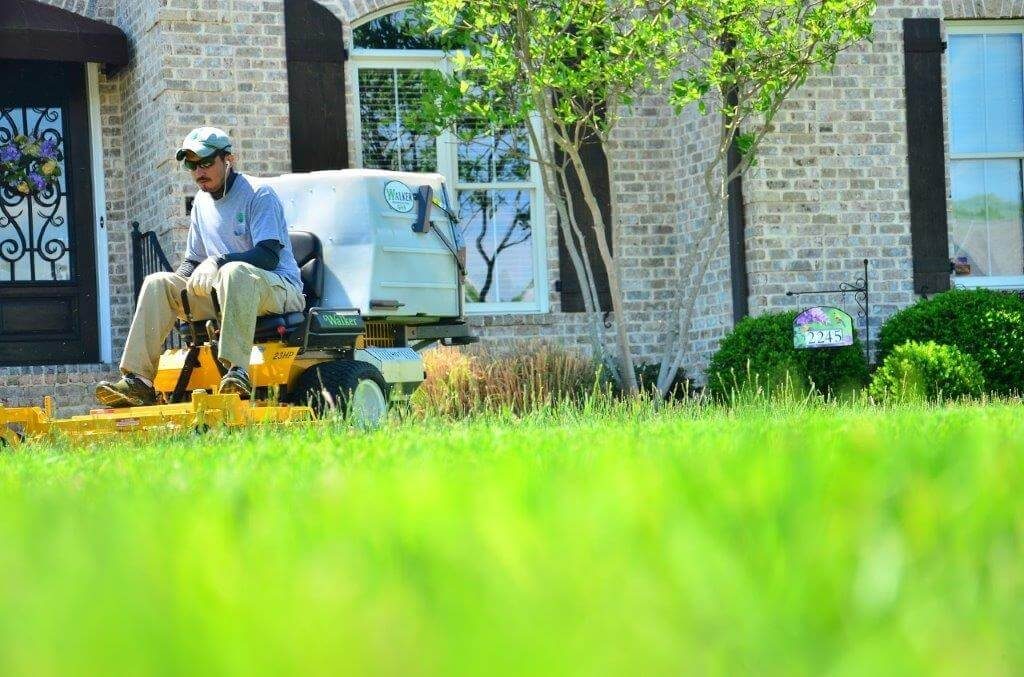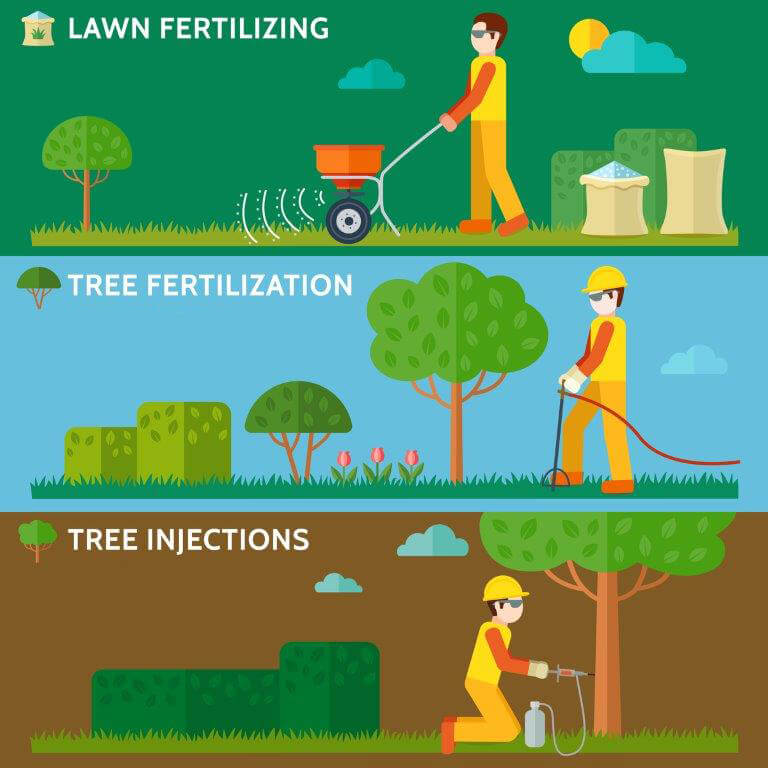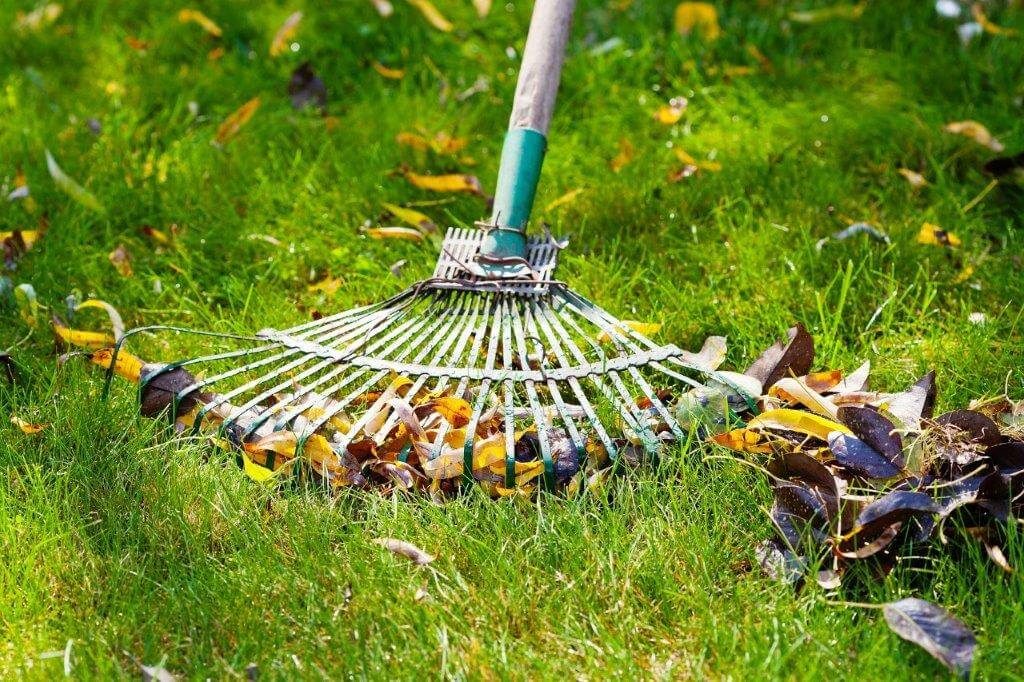Punch your lawn full of holes – it will breathe easier for months to come.
Most everyone understands the need for regular feeding, weed control, and proper mowing and watering in maintaining a thick, green, beautiful lawn. But did you know that aeration is just as important as any of these? And the benefits of aeration aren’t just here today and gone tomorrow. They continue for months after being performed and work together with all the other services your lawn receives throughout the year.
The best way to understand aeration is to think of it as a re-arrangement of your soil without damage to your turf. You might ask: “who cares how much my soil moves? What difference does it make anyway?”
Aeration removes thousands of soil cores from your lawn and deposits them above the thatch layer. The cores are about half inch in diameter and 2” to 3” long. That’s it. It sounds simple, but as soon as aeration is completed, a lot of good things begin to happen to your lawn – and continue for months after the service is performed.
The first immediate benefit is the creation of tiny pockets in your lawn to catch and hold air, water, and fertilizer. This is especially important in heavy soils that tend to be compacted and shed water rather than absorbing it.
What is aeration?
Technically speaking, aerations is the naturally occurring process of air exchange between the soil and its surrounding atmosphere. Practically speaking, aeration is the process of mechanically removing small plugs of thatch and soil from the lawn to improve soil aeration. Textbooks often refer to the practices of soil aeration as soil cultivation (coring, spiking, and slicing). The aeration process is also commonly called core aeration in the lawn service industry and homeowners often refer to it as aeration.
Why is aeration necessary?
In most home lawns, the natural soil has been seriously disturbed by the building process. Fertile topsoil may have been removed or buried during excavation of the basement of footings, leaving subsoil that is more compact, higher in clay content and less desirable for healthy lawn growth. These lawns need aeration to improve the depth and extent of turfgrass rooting and to improve fertilizer and water use.
Thatch breakdown:
Core aeration modifies thatch by incorporating soil into it. This allows soil organisms to break down the thatch and reduce its accumulation. Turfgrass rooting and surface growth also improve after aeration.
Soil compaction:
Turfgrass in compacted soil grows slowly, lacks vigor and becomes thin or does not grow at all. Core aeration removes small cores of soil, depositing them on the surface of the turf. This improves the depth and extent of turfgrass rooting and it can help save money on your water bill.
When should lawns be aerated?
Annual aeration is beneficial for most lawns. Lawns growing on heavy clay or subsoils, and lawns exposed to intense use will benefit from more than one aeration each year. In general, benefits increase when the tine spacing is closer and penetration is deeper. Most turf grasses respond favorably to aeration when it is properly timed.
Fall is an ideal time to aerate cool season turf grass and perennial ryegrass. In most cases, fall aeration is done in late summer and early fall, usually between August and November. Aeration before or at the time of late season fertilization enhances root growth responses and improves spring green-up and growth.
What are the benefits of aeration?
Core aeration helps the lawn’s health and vigor, and it reduces maintenance requirements. The following are other benefits of core aeration.
- Improved air exchange between the soil and atmosphere
- Enhanced soil water uptake
- Improved fertilizer uptake and use
- Reduced water runoff and puddling
- Improved fertilizer uptake and use
- Reduced water runoff and puddling
- Improved turfgrass rooting
- Reduced soil compaction
- Enhanced heat and drought stress tolerance
- Improved resiliency and cushioning
- Enhanced thatch breakdown
